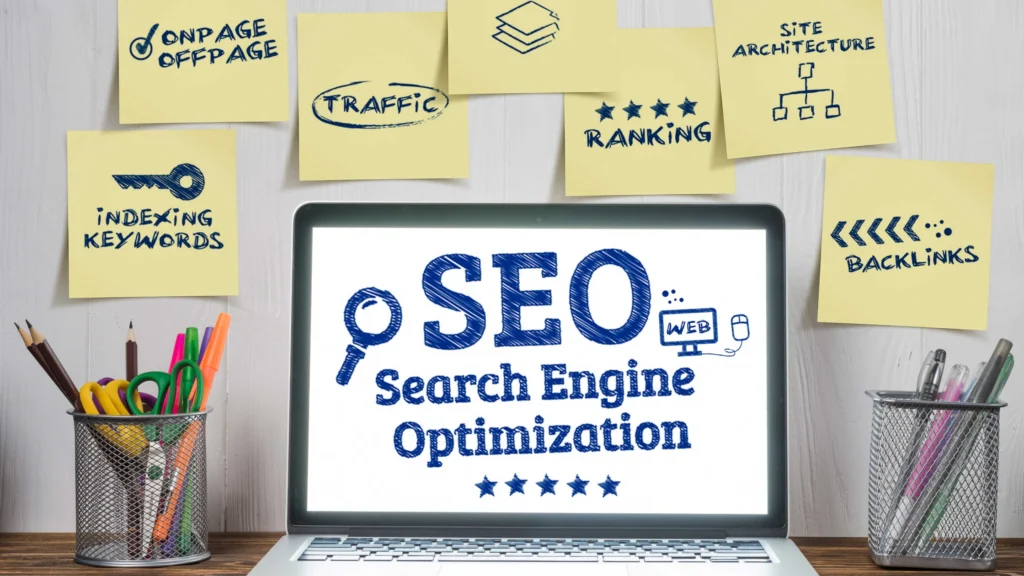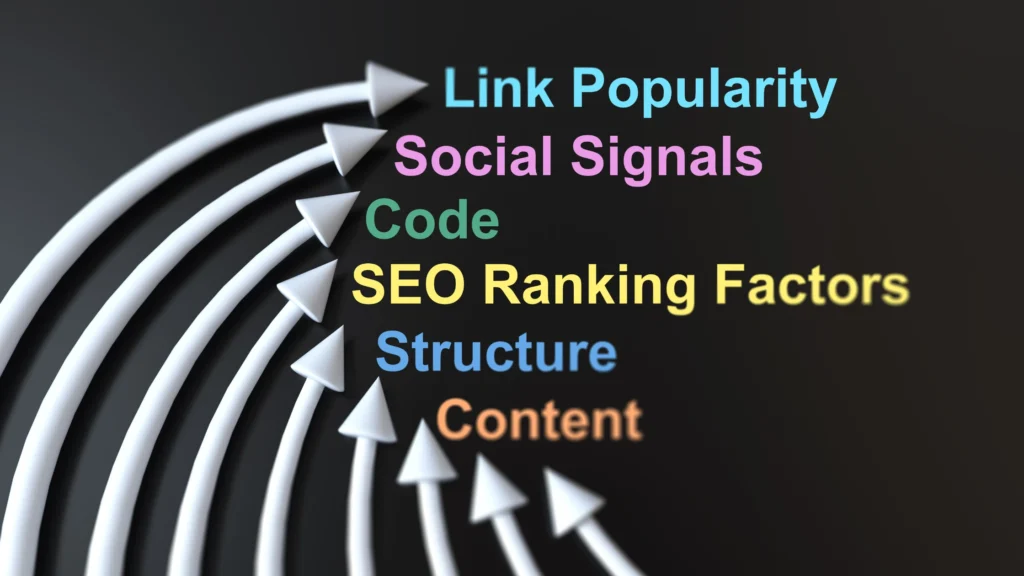Imagine you’ve just opened a beautiful shop in the middle of a massive city. Your store is filled with amazing products, but there’s one problem: nobody knows you exist. That’s what having a website without SEO feels like. Search Engine Optimization (SEO) is the process of making your website more visible on search engines like Google so that people can actually find you when they need your products or services. This guide will break down exactly what is SEO is, why it matters, and how you can start leveraging it to grow your online presence step by step.
SEO isn’t just about stuffing keywords into your pages. It’s about understanding what people are searching for, providing valuable content, and making sure search engines can easily access and rank your site. Whether you run a personal blog, an e-commerce store, or a business website, learning SEO is a must if you want to attract consistent, free traffic.
Let’s dive into the nuts and bolts of SEO and uncover how it really works, even if you’re a total beginner.
Understanding the Basics of SEO
What Does SEO Stand For?
SEO stands for Search Engine Optimization. At its core, it’s all about improving your website so that it appears higher in search results when people look for relevant topics. If you’ve ever searched something like “best pizza near me” or “how to change a tire,” you’ve seen SEO in action—the websites you click on at the top have usually optimized their content to show up first.
Think of SEO as a roadmap that helps search engines understand:
- What your website is about.
- Which topics you are an authority on.
- How trustworthy and relevant your content is.
Search engines have one goal: to deliver the most helpful, accurate, and authoritative answers to people’s questions. If your site ticks all those boxes, you’ll get more visibility.
Why is SEO Important?
SEO is important because it can drive organic traffic—visitors who find you naturally, without paid advertising. This traffic is:
- Free (you don’t pay per click).
- Targeted (people searching already have intent).
- Sustainable (good SEO can bring results for years).
Over 90% of online experiences begin with a search engine. If your website doesn’t appear on the first page, it’s almost invisible to most users. Good SEO bridges the gap between your content and the people looking for it.
Here’s why SEO matters:
- It builds trust and credibility.
- It improves user experience.
- It fuels long-term business growth.
In short, if you want people to discover your website organically, SEO isn’t optional—it’s essential.
How Search Engines Work
Crawling and Indexing Explained
Before a search engine like Google can show your site to users, it needs to find it and understand it. This happens through two processes: crawling and indexing.
- Crawling: Search engines use automated bots called spiders or crawlers to browse the web. These bots jump from one link to another, collecting information about every page they visit.
- Indexing: After crawling, search engines organize the content they’ve found into a massive database called the index. Think of this as a gigantic library cataloging every web page.
When you publish a new article or product page, search engines eventually crawl it and decide where it should appear in search results. If your site is hard to crawl (for example, if it has broken links, confusing navigation, or blocked pages), you may struggle to get indexed.
To help search engines crawl and index your site, you should:
- Submit a sitemap.
- Use clean URLs.
- Avoid duplicate content.
- Fix errors that block bots.
Understanding crawling and indexing is crucial because if search engines can’t find your content, it won’t rank—no matter how great it is.
The Role of Algorithms in Ranking
Once your website is indexed, search engines use complex algorithms to decide which pages deserve to rank highest. These algorithms consider hundreds of factors, including:
- Relevance (does your content match the user’s query?).
- Authority (do other websites link to you?).
- User experience (is your site fast and mobile-friendly?).
Google’s algorithms are constantly evolving to deliver better results. Updates like Panda, Penguin, and RankBrain have reshaped the SEO landscape over the years.
If you want to rank higher, you need to align your site with what search engines value most. That means:
- Publishing high-quality content.
- Earning credible backlinks.
- Optimizing for technical performance.
Think of the algorithm as a giant recipe. The better your ingredients (content, links, structure), the tastier your dish (ranking).
Core Components of SEO

On-Page SEO Fundamentals
On-page SEO is everything you do on your own website to improve rankings. This includes optimizing your:
- Content
- HTML tags
- Site structure
Keywords and Content Optimization
Keywords are the bridge between what people search for and the content you create. But using keywords isn’t about stuffing them everywhere—it’s about naturally weaving them into helpful content.
Here’s how to optimize effectively:
- Choose target keywords based on search volume and relevance.
- Use them in headings, paragraphs, and image alt text.
- Write content that answers questions comprehensively.
For example, if your keyword is “how SEO works,” your article should explain the process step by step. You’ll also want to include related phrases like “SEO basics,” “search engine optimization process,” and “SEO for beginners.”
Great on-page SEO blends user-friendly writing with smart keyword placement.
Meta Tags and Headings
Meta tags are snippets of text that describe your page to search engines and users. The most important are:
- Title tag: Appears as the clickable headline in search results.
- Meta description: A short summary under the title.
Use your primary keyword in the title and description while making them compelling enough to earn clicks.
Headings (H1, H2, H3) structure your content for both users and search engines. They make pages easier to scan and signal the topic of each section.
Remember:
- Use only one H1 tag per page.
- Break content into logical sections with H2 and H3 headings.
- Incorporate keywords naturally.
Off-Page SEO Strategies
Off-page SEO refers to everything you do outside your website to boost rankings. The most powerful tactic is building backlinks—links from other websites pointing to yours.
Backlinks and Authority Building
Search engines see backlinks as votes of confidence. The more high-quality sites link to you, the more trustworthy you appear.
Not all backlinks are equal:
- Links from authoritative domains (like news outlets or industry leaders) carry more weight.
- Links from spammy or irrelevant sites can hurt your rankings.
Ways to earn quality backlinks:
- Create share-worthy content (guides, infographics, research).
- Reach out to bloggers and journalists.
- Write guest posts on reputable sites.
- Get listed in relevant directories.
Think of backlinks as endorsements in the digital world. The better your reputation, the higher you’ll climb in search results.
Technical SEO Essentials
Site Speed and Mobile-Friendliness
Technical SEO focuses on the behind-the-scenes elements that impact your website’s visibility. Even if you have the best content and a ton of backlinks, poor technical performance can hold you back.
Site speed is one of the most critical ranking factors. Google wants to deliver a smooth experience, so it favors fast-loading websites. A slow site frustrates visitors and increases your bounce rate (how quickly people leave).
To improve your loading speed:
- Compress images without losing quality.
- Minimize unnecessary code (HTML, CSS, JavaScript).
- Use a reliable hosting provider.
- Enable browser caching and content delivery networks (CDNs).
Mobile-friendliness is another essential aspect. Over 60% of searches happen on mobile devices, so Google uses mobile-first indexing. This means your mobile site is the primary version Google evaluates, not your desktop version.
Here’s how to optimize for mobile:
- Use responsive design so your layout adapts to any screen.
- Make buttons and links large enough to tap easily.
- Avoid intrusive pop-ups that cover content.
- Keep navigation simple.
Think of technical SEO as laying a sturdy foundation for your website. Without it, your house (content and backlinks) can’t stand tall in search rankings.
Keyword Research Demystified
How to Find the Right Keywords
Keyword research is the process of identifying what your audience is actually searching for. If you skip this step, you risk creating content nobody wants.
Start by brainstorming a list of topics relevant to your business. For each topic, think about:
- Primary keywords: The main terms people use (e.g., “SEO guide”).
- Long-tail keywords: Longer, more specific phrases (e.g., “beginner’s guide to SEO in 2025”).
- Questions: What queries are people asking? (e.g., “How does SEO work?”).
Once you have your list, evaluate each keyword’s:
- Search volume (how many people look for it monthly).
- Difficulty (how hard it is to rank).
- Intent (what users want—information, products, services).
Prioritize keywords with decent volume and low to moderate competition. Remember: long-tail keywords are often easier to rank for and can attract highly targeted traffic.
Tools to Help Your Keyword Research
You don’t have to guess what people are searching for. There are plenty of tools to help you uncover the right keywords:
- Google Keyword Planner (free): Great for starting out.
- Ubersuggest: User-friendly and affordable.
- SEMrush and Ahrefs: Industry-leading tools with powerful features.
- Answer the Public: Visualizes questions people ask around a keyword.
Pro tip: Always look at what’s already ranking for your target keyword. Analyze the top results—how long are their articles? What subtopics do they cover? This helps you create something better and more thorough.
Keyword research is like picking the right fishing spot. If you know where the fish are biting, you’ll catch more.
Creating SEO-Friendly Content
Writing for Humans and Search Engines
Content is the heart of SEO. But here’s the trick: you must balance writing for people and search engines. Over-optimizing for bots makes your content robotic. Ignoring SEO means your content won’t get found.
Here’s how to strike the balance:
- Write clear, engaging headlines that include your keywords.
- Use a conversational tone—imagine you’re explaining the topic to a friend.
- Break up long paragraphs with subheadings and bullet points.
- Naturally integrate keywords throughout the text (avoid keyword stuffing).
- Answer related questions your audience might have.
- Include internal links to other relevant pages on your site.
Google values expertise, authoritativeness, and trustworthiness (E-A-T). To establish E-A-T:
- Back up claims with credible sources.
- Show your credentials or experience.
- Keep content updated.
At the end of the day, if your content genuinely helps people, search engines will notice.
The Importance of Fresh, Relevant Content

Search engines love freshness. If your content is outdated, you risk losing rankings to competitors with more up-to-date information.
Ways to keep content fresh:
- Regularly update statistics and examples.
- Expand articles with new sections.
- Republish evergreen posts with the latest data.
- Remove outdated references.
Besides freshness, relevance matters. Make sure your content aligns with search intent—what users expect to find. For example, if someone searches “how SEO works,” they want a step-by-step explanation, not a sales pitch.
Creating SEO-friendly content is like planting a garden. If you tend it regularly and keep it healthy, it will flourish and bring results over time.
Link Building Techniques
White-Hat vs. Black-Hat Link Building
Link building can make or break your SEO strategy. But not all link-building methods are created equal.
- White-hat link building: Legitimate strategies that follow search engine guidelines. Examples:
- Creating high-quality content others want to reference.
- Building relationships with influencers in your niche.
- Earning mentions in trusted publications.
- Creating high-quality content others want to reference.
- Black-hat link building: Tactics that try to manipulate rankings by breaking rules. Examples:
- Buying links in bulk.
- Participating in link farms or private blog networks.
- Hiding links in code.
- Buying links in bulk.
Black-hat strategies may offer short-term gains but usually lead to penalties and lost rankings. Stick to white-hat methods for sustainable growth.
Strategies to Earn Quality Links
Getting other sites to link to you takes time, creativity, and consistency. Here are proven strategies to earn backlinks:
- Guest Blogging
- Write valuable articles for reputable sites in your niche.
- Include a contextual link back to your website.
- Write valuable articles for reputable sites in your niche.
- Resource Pages
- Find websites that list helpful resources.
- Reach out and suggest your content as an addition.
- Find websites that list helpful resources.
- Broken Link Building
- Discover broken links on other websites.
- Offer your content as a replacement.
- Discover broken links on other websites.
- Skyscraper Technique
- Find high-performing content.
- Create an even better version.
- Promote it to the right audience.
- Find high-performing content.
- Digital PR
- Share data studies, infographics, or unique insights.
- Pitch journalists and bloggers for coverage.
- Share data studies, infographics, or unique insights.
Remember, earning links is like earning trust. It doesn’t happen overnight—but it’s worth the effort.
Measuring SEO Success
What is SEO Important Metrics to Track

If you’re investing time and energy into SEO, you need to measure what’s working. Otherwise, you’re driving blind. The right metrics help you fine-tune your strategy and prove your ROI.
Here are the most important SEO metrics to monitor:
- Organic Traffic
The number of visitors who find your site through search engines. Look at overall trends and identify which pages attract the most traffic. - Keyword Rankings
Track how your target keywords move up or down in search results. Use tools like SEMrush or Ahrefs for daily updates. - Click-Through Rate (CTR)
This tells you how many people click on your link after seeing it in search results. A low CTR may mean your title or description isn’t compelling enough. - Bounce Rate
The percentage of visitors who leave your site without interacting. A high bounce rate often signals poor content relevance or a bad user experience. - Average Session Duration
How long visitors stay on your site. Longer sessions usually indicate engaging content. - Backlinks
The number and quality of sites linking to you. More authoritative backlinks generally boost rankings.
Keep a regular eye on these metrics. They’re like the dashboard gauges on your car—if something’s off, you’ll spot it before you crash.
Using Google Analytics and Search Console
Two free tools every website owner should install:
Google Analytics
- Tracks how users find and interact with your site.
- Shows which pages perform best.
- Helps you understand your audience demographics and behavior.
Google Search Console
- Monitors your website’s health in Google’s index.
- Tells you which keywords drive traffic.
- Alerts you to crawl errors or security issues.
Set up both tools and check them regularly. They provide the insights you need to tweak your SEO efforts effectively.
Common SEO Mistakes to Avoid
Keyword Stuffing
Keyword stuffing is when you overload your content with your target keywords in an attempt to manipulate rankings. Years ago, this tactic worked—today, it’s a surefire way to get penalized.
Signs of keyword stuffing:
- Awkward, repetitive sentences.
- Lists of keywords without context.
- Unnatural overuse in headings or meta tags.
Instead, use keywords sparingly and naturally. Focus on solving users’ problems and answering their questions. Google rewards quality, not quantity.
Ignoring Mobile Optimization
Many website owners still forget that most people browse on mobile devices. If your site isn’t mobile-friendly, you’re leaving traffic and rankings on the table.
Common mistakes:
- Tiny fonts and buttons.
- Content that doesn’t resize on smaller screens.
- Pop-ups that block important information.
Use Google’s Mobile-Friendly Test to see where you stand. Make sure your site looks and works great on every device.
Think of mobile optimization as rolling out a welcome mat for your visitors. If your site isn’t ready, they’ll bounce to your competitors.
The Future of SEO
Voice Search and AI in SEO
The way people search is changing fast. Thanks to smart speakers and voice assistants like Siri, Alexa, and Google Assistant, more searches happen through voice queries.
Voice search is:
- Longer (people ask full questions instead of keywords).
- More conversational.
- Often local (“Where’s the nearest coffee shop?”).
To prepare:
- Optimize for natural language queries.
- Create FAQ sections that answer common questions.
- Use structured data (schema markup) to help search engines understand your content.
AI is also transforming SEO. Tools like Google RankBrain use machine learning to better understand user intent. This means the focus will continue shifting from keywords to relevance and context.
Evolving Search Algorithms
Google updates its algorithms constantly—sometimes minor tweaks, sometimes massive shifts (like the helpful content update).
To stay ahead:
- Follow Google’s Search Central Blog.
- Focus on creating genuinely valuable content.
- Avoid shortcuts and shady tactics.
The future of SEO is about adaptability. If you stay flexible and put users first, your strategy will thrive no matter how search evolves.
Local SEO Basics
Optimizing for “Near Me” Searches
Local SEO helps businesses attract customers in their geographic area. If you own a café, plumbing company, or retail store, local SEO is your best friend.
“Near me” searches have skyrocketed—people want instant, relevant results. To capitalize on this:
- Use location-specific keywords (e.g., “SEO consultant in Chicago”).
- Make sure your NAP (Name, Address, Phone number) is consistent everywhere.
- Embed a Google Map on your contact page.
The more local signals you send to search engines, the more likely you’ll appear when customers nearby search for your services.
Importance of Google Business Profile
Your Google Business Profile (formerly Google My Business) is crucial for local visibility. It’s the listing that shows up when people search for your business name or related services.
Make sure to:
- Claim and verify your profile.
- Add high-quality photos.
- Respond to reviews (good and bad).
- Keep your hours and information up to date.
A complete, optimized profile builds trust and encourages more clicks and calls.
E-commerce SEO Tips
Optimizing Product Pages
If you run an online store, your product pages are the key to attracting buyers. Yet many e-commerce sites simply copy-paste manufacturer descriptions—big mistake.
To optimize:
- Write unique, detailed product descriptions.
- Use clear titles with relevant keywords.
- Add high-quality images and videos.
- Include customer reviews for social proof.
- Use schema markup to enhance rich snippets (e.g., star ratings).
Better product pages mean more visibility and higher conversion rates.
Leveraging User Reviews
User-generated content like reviews not only helps customers decide but also boosts your SEO.
Benefits:
- Adds fresh content to your site.
- Increases trust and credibility.
- Improves keyword relevance.
Encourage customers to leave reviews after purchase. The more authentic feedback you have, the better your site will perform in search results.
SEO for Small Businesses
Cost-Effective SEO Strategies
Small businesses often have limited budgets, but that doesn’t mean you can’t compete with bigger players. Smart, cost-effective SEO can still drive meaningful results without draining your wallet.
Here’s how to make the most of a small budget:
- Focus on Local SEO:
Target your immediate area. Create and optimize your Google Business Profile, collect local reviews, and list your business in local directories. - Prioritize Long-Tail Keywords:
These are less competitive and easier to rank for. For example, instead of “SEO services,” go after “affordable SEO services for small businesses.” - Leverage Free Tools:
Use Google Search Console, Google Analytics, and Answer the Public to research keywords and track performance. - Build Relationships:
Partner with local bloggers or community sites for backlinks and exposure. - Repurpose Content:
Turn blog posts into videos, infographics, or social posts to stretch your content further.
Remember, consistency beats intensity. Regularly publishing helpful content and maintaining your site can outperform sporadic big-budget campaigns over time.
Building Local Authority
Local authority is about becoming the go-to expert in your area. When your business is trusted locally, you’ll naturally earn mentions, backlinks, and higher rankings.
Strategies to build local authority:
- Sponsor local events or charities.
- Participate in community forums or Facebook groups.
- Collaborate with nearby businesses on promotions.
- Get featured in local news outlets.
Think of local authority like word-of-mouth in the digital age. The more people talk about you online, the more search engines will trust you.
Hiring an SEO Expert vs. DIY SEO
Pros and Cons of Each Approach
When it comes to SEO, you have two main options: learn it yourself or hire a professional. Each path has its benefits and challenges.
Pros and Cons of DIY SEO
Pros
- Saves money
- Gives you full control.
- Teaches you valuable skills.
Cons
- Time-consuming to learn and execute.
- Hard to stay current with updates.
- Risk of mistakes that hurt your rankings.
Pros and Cons of Hiring an Expert
Pros
- Leverages professional experience.
- Frees up your time.
- Often gets faster results.
Cons
- Not all SEO providers are reputable.
- Not all SEO providers are reputable.
- Less direct control over strategy.
What to Look for in an SEO Professional
If you decide to hire an SEO expert, vet them carefully. The wrong provider can do more harm than good.
Checklist for choosing an SEO professional:
- Proven Track Record: Ask for case studies or references.
- Transparent Methods: Avoid anyone promising guaranteed #1 rankings.
- Clear Communication: They should explain strategies in plain English.
- Up-to-Date Knowledge: SEO evolves quickly—your expert should too.
- Customized Approach: One-size-fits-all strategies rarely work.
Take your time to find the right fit. A good SEO partner is an investment in your long-term growth.
Conclusion
Search Engine Optimization isn’t just a buzzword—it’s a proven strategy for getting your website found by the people who need you most. Whether you’re a small business owner, blogger, or e-commerce entrepreneur, learning how SEO works can transform your online presence.
Remember:
- SEO is a marathon, not a sprint.
Consistency and patience pay off. - Focus on your audience first.
If your content genuinely helps people, search engines will reward you. - Stay adaptable.
The digital landscape changes constantly—keep learning and adjusting.
With the right mindset and tools, you can master SEO and start climbing the search rankings, one step at a time.
